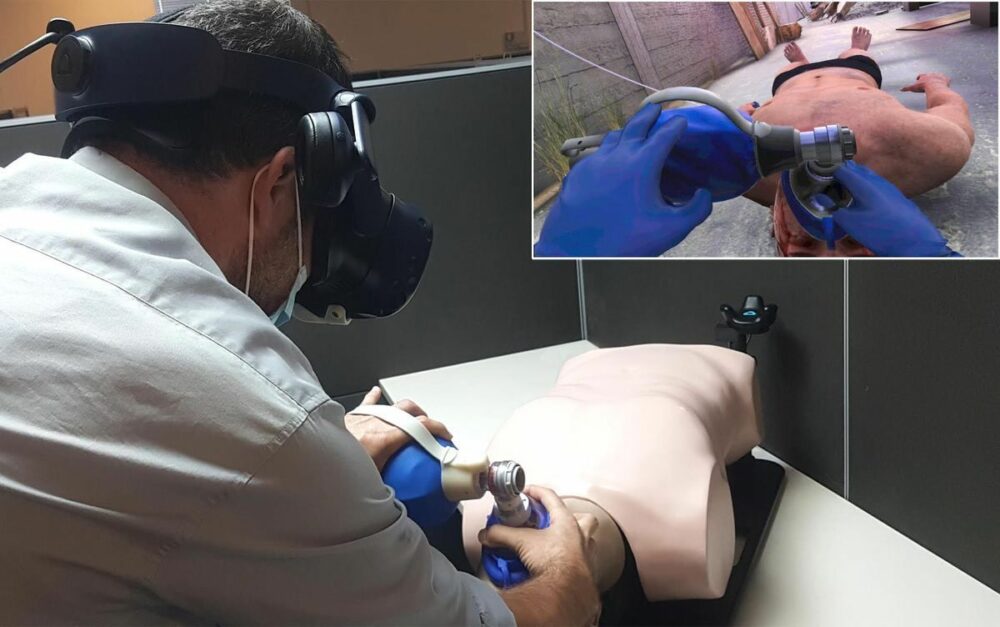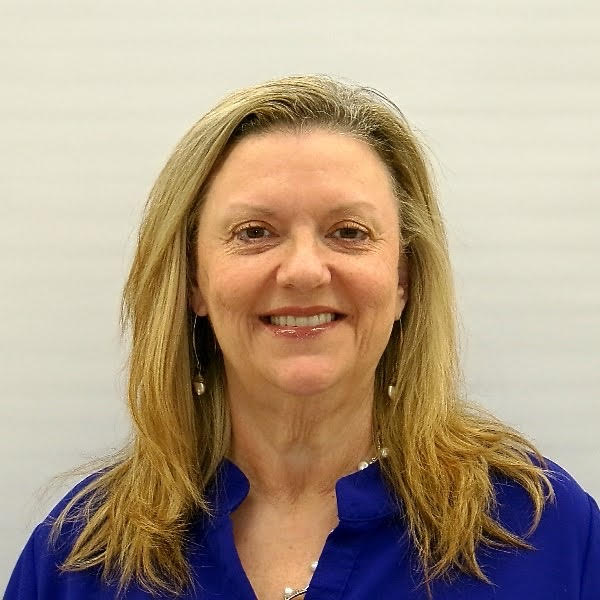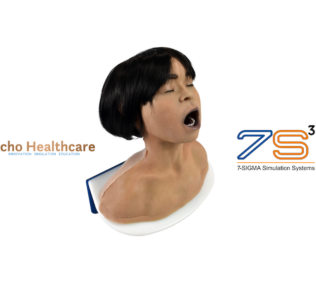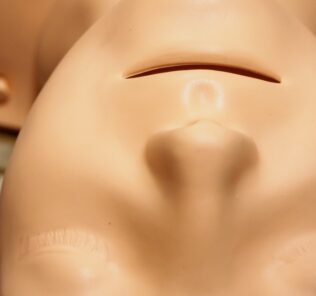Surgical Science Combines Manikins and Virtual Reality with TraumaVR
Surgical Science has launched the new TraumaVR simulator, combing virtual reality and manikin technologies together to improve airway intubation training for trauma patients. Surgical Science helps to prepare clinicians for treating emergency trauma patients with the combination of manikins and virtual reality in medical simulation. Preparing healthcare professionals to treat these emergencies presents challenges. Virtual Reality (VR) has been around for a few years, and there are different products in the gaming industry and others, which use controllers to enable user’s actions tracking as an interface to the virtual world. This HealthySimulation.com article explores the Surgical Sciences TraumaVR simulator.
Patient manikins present some limitations in versatility of clinical scenarios and patient anatomies. There is a gap in the ability to track all the learners’ actions and require substantial investment. Training with existing immersive VR simulators lacks instrument operation realism and tactile feedback. Both traditional manikins and VR simulators do not track instrument operation inside the patient’s body.
However, there are almost no VR based products which enable high level technical training. Surgical Science’s new TraumaVR simulator addresses the gap through the combination of a manikin and instruments with immersive VR simulation.
Sponsored Content:
TraumaVR is a high-end hybrid VR simulator that combines hardware and software to optimize the educational environment. This allows learners the opportunity to learn life-saving procedures through realistic visual effects and procedure performance. The platform allows for a manikin to interface and tactile feedback along with trackable devices. Tracking occurs in the environment with HTC VIVE manikin and goggles, spatial; electromagnetic with manikin and tools; and optical with LeapMotion.
This provides the learners with an unprecedented training opportunity of psychomotor (motor skills) and cognitive knowledge and skill acquisition in airway management. With the most realistic virtual reality environment, it embeds trainees in stressful situations, unlike any other simulator.
The combination between VR hands scenario, theoretical teachings and hands on physical-technical setup is an area where only few companies have the experience and knowledge required to develop commercial level products.
Trainee skills improvement can be tracked and monitored by using metrics in the TraumaVR platform in clinical simulation. This provides facilitators and learners with a wide set of metrics, which essentially enable the trainee to improve each stage of the procedure, and not only based on the final result. The ability to accurately track the learner’s movements, whether using sensory surfaces or tracking sensors, to less than 1mm deviation.
Sponsored Content:
Healthcare simulation research shows that psychomotor skills in combination with VR can be an effective way to promote mastery learning and retention of the skills. Other studies reveal learner self-confidence and self-efficacy along with competency can improve with manikin and VR experiential learning opportunities. Another concept in the simulation research states that appropriate integration of VR in clinical simulation may lead to more rapid learning and lower the cost of the education.
View the HealthySimulation.com LEARN CE/CME Platform Webinar Combining Manikin and VR Simulation Technologies to Improve Clinical Outcomes to learn more!
The Surgical Science TraumaVR Simulator Features:
- Instrument tracking: laryngoscope, bag valve mask, ET tube, stethoscope and suction tube
- Detailed curriculum covering common techniques such as Jaw Thrust and BURP – backward, upward, and right-sided pressure maneuver
- Realistic oral cavity anatomy and physiology
- Tactile sensation of instruments inside the patient’s mouth/throat
- Performance assessment at the end of simulation
- Optional proctored or self-directed training
- Dynamic complications
- Vital signs affected by patient management and drug administration
The benefits of TraumaVR in addition to improved learners outcomes are:
- Cost effective due to the TraumaVR simulator ability to allow scenarios to be changed with no additional personnel or materials needed and minor maintenance cost
- Simple to operate the TraumaVR simulator, training scenes and scenarios because they can be easily switched, or have team members added to the training
- Versatile training with TraumaVR simulator’s incorporation of various scenarios, difficulty levels based on the learner and type of patient.
- The patient anatomies, injury types, consciousness levels, and surroundings can be changed to create customized simulations
More About Surgical Science
Surgical Science is a supplier of medical virtual reality simulators. The company’s healthcare simulation training solutions provide a safe environment to master skills and procedures prior to patient interaction. Through the use of advanced technology and partnerships with medical simulation societies and the healthcare simulation community at large, Surgical Science is able to create unmatched graphics and haptics for a realistic learning experience.
The company’s education resources are currently used in simulation centers, hospitals, universities, and by medical device partners in over 60 countries, to help medical professionals become more skilled and confident. Headquartered in Göteborg, Sweden, Surgical Science has remained committed to providing state-of-the-art medical training simulators that focus on ease of use and validation for over 20 years.
The company shares, “The simple idea is to learn the practical techniques of instrument handling in a realistic but safe environment so that you can pay full attention to the patient when you begin the operation.” Ultimately, the vision is that every patient undergoing a medical procedure is certain that the caregiver is trained and objectively certified in a simulated environment.
Learn More About Surgical Science TraumaVR
Teresa Gore, PhD, DNP, APRN, FNP-BC, CHSE-A, FSSH, FAAN – Dr. Gore has experience in educating future nurses in the undergraduate and graduate nursing programs. Dr. Gore has a PhD in Adult Education, a DNP as a family nurse practitioner, and a certificate in Simulation Education. Dr. Gore is an innovative, compassionate educator and an expert in the field of healthcare simulation. In 2007l Teresa started her journey in healthcare simulation. She is involved in INACSL and SSH. She is a Past-President of INACSL and is a Certified Healthcare Simulation Educator Advanced (CHSE-A). In 2018, she was inducted as a Fellow in the American Academy of Nursing (FAAN). In 2021, she was inducted as a Fellow in the Society of Simulation in Healthcare Academy (FSSH) and selected as a Visionary Leader University of Alabama at Birmingham School of Nursing Alumni. During her career, Dr. Gore has led in the development and integration of simulation into all undergraduate clinical courses and started an OSCE program for APRN students. Her research interests and scholarly work focus on simulation, online course development and faculty development. She has numerous invited presentations nationally and internationally on simulation topics.
Sponsored Content:





















